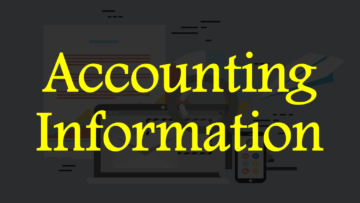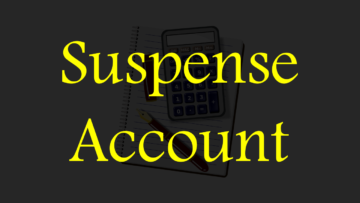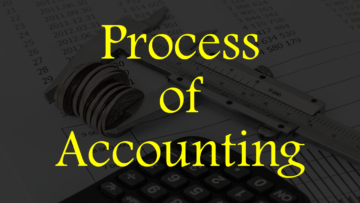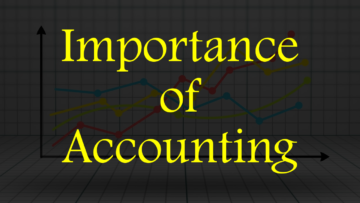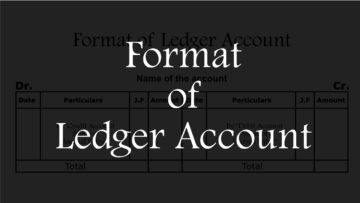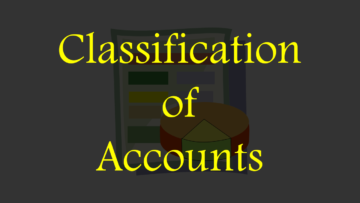Every organization has some objective for which it works and undertakes economic transactions to complete that task. Every organization is completely dependent on financial support because the organization needs financial support from starting to closing, that is why many types of accounting reports are prepared in the organization, with the help of which it can be known that What is the financial condition, financial performance, etc. of the organization.
To prepare accounting reports, economic transactions are first identified, then measured in the country’s currency, and then recorded as per the concept of the journal. Unless the transactions are recorded as per the concept of journal further process cannot be done. Nowadays, technology is being used for accounting which is making accounting easier.
Note: Due to increasing technology, manual work is decreasing.

Table of Contents
What is a journal?
Meaning of Journal
Journal is a concept of recording transactions in accounting, and it is a very important concept in accounting because further accounting processes are done on the basis of journal/journal entries. Journal works according to the double entry system (under which every transaction has a debit side and a credit side) and rules of debit and credit (which states what will be debit and what will be credit). All the recordings made through the concept of journal are considered as primary recording data as it is the first stage of recording.
The recording stage of the accounting process is accomplished through the concept of journal. Entries of transactions passed with the help of the concept of journal are called journal entries and the book in which it is recorded is called journal book. The journal book is further divided into several parts called subsidiary books. When journal entries are passed the ledger accounts are prepared as the journal entries are recorded in the ledger accounts.
Definition of Journal
According to Eric. L. Kohler – “A journal is a book of original entry in which recorded transactions are not provided for in special journals.”
According to Carter – “The journal, as originally used, is a book of principal entry in which the transactions are copied, in order of date, from a memorandum or waste book.”
According to L.C. Cropper – “A journal is a book, employed to classify or sort out a transaction in a form convenient for their subsequent entry in the ledger.”
According to M. J. Keeler – “A journal is a chronological record of financial transactions of a business.”
Example of Journal Entry
| Date | Particulars | L.F. | Debit Amount | Credit Amount |
| 23.04.2024 | EFG Company Pvt. Ltd. Dr. | 80 | 15,00,000/- | |
| To Bank A/c | 37 | 15,00,000/- | ||
| Narration – Being bill paid through bank. | ||||
| – | ||||
| 24.04.2024 | Cash A/c Dr. | 43 | 10,000/- | |
| To LML Company Pvt. Ltd. | 95 | 10,000/- | ||
| Narration – Being cash received. | ||||
| Total | 15,10,000/- | 15,10,000/- |
Features of Journal
Following are the features of the Journal:
1. Concept:
The first feature of a journal is that it is a concept of recording transactions in accounting. With its use, the recording stage of the accounting process is completed. In the recording stage of the accounting process, the transactions are recorded in the book using the concept of journal and this is where the recording of transactions in the book starts.
2. Double Entry System:
Another feature of the journal is that it is based on the double entry system due to which each transaction is divided into a debit side and a credit side. For example, if purchase transaction is done on cash then the purchase will be on one side and cash will be on the other side. Further processing is done when the debit side and credit side of the transaction are separated.
| Debit Side | Credit Side |
3. Rule of Debit and Credit:
All journal entries in the journal are passed according to the rules of debit and credit. This rule helps to determine what is to be credited and what is to be debited. This rule applies along with the double entry system because without both, journal entries cannot be passed.
| Personal Account | Debit the receiver. Credit the giver. |
| Real Account | Debit what comes in. Credit what goes out. |
| Nominal Account | Debit all expenses/losses. Credit all income/gains. |
4. Primary Data:
All transactions recorded through the concept of journal are considered as primary data of recording as the source documents are directly recorded in it. Once the source document is identified and measured in the relevant currency, it is directly recorded in the journal book as per the concept of the journal.
5. First Stage:
Another feature of the journal is that it is the first stage of recording as the recording of transactions starts from the journal. Once the source documents have been identified and measured, they are entered directly into the journal book with the concept of a journal. This step is done very carefully as it is the primary data of recording and if any error occurs here then further processing may be hampered.
6. Systematic:
In the journal, all the transactions are recorded systematically which makes the management of transactions easier like all the economic transactions happening in the business are recorded in the journal book in chronological order, like date, nature etc. To manage the journal book more systematically, it is divided into several parts. This division can be in many ways like according to the nature of the transaction, according to the period, etc.
Read Also:
QNA/FAQ
Q1. What is a journal?
Ans: Journal is a concept of recording transactions in accounting.
Q2. Does the journal work according to double entry system?
Ans: Yes, the journal works according to the double entry system due to which each transaction has two parts.
Q3. Does the journal work according to the rules of debit and credit?
Ans: Yes, Journal works according to the rules of debit and credit due to which it is known what will be debit and what will be credit.
Q4. Are recordings made through journals considered primary data?
Ans: Yes, the recording done through journal is considered as primary data as it is the first stage of recording the transaction.
Q5. Write the features of the journal.
Ans: Following are the features of the Journal:
1. Journal is a concept.
2. Journal works according to the double entry system.
3. Journal works according to the rules of debit and credit.
4. Journal is the primary data of recording.
5. Journal is the first step of recording.
6. In journal, all recordings are made systematically.



